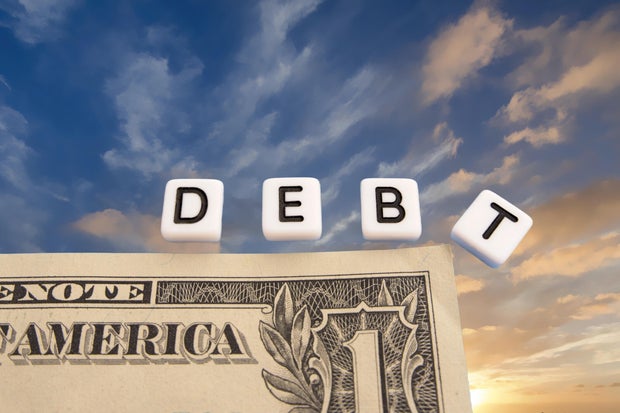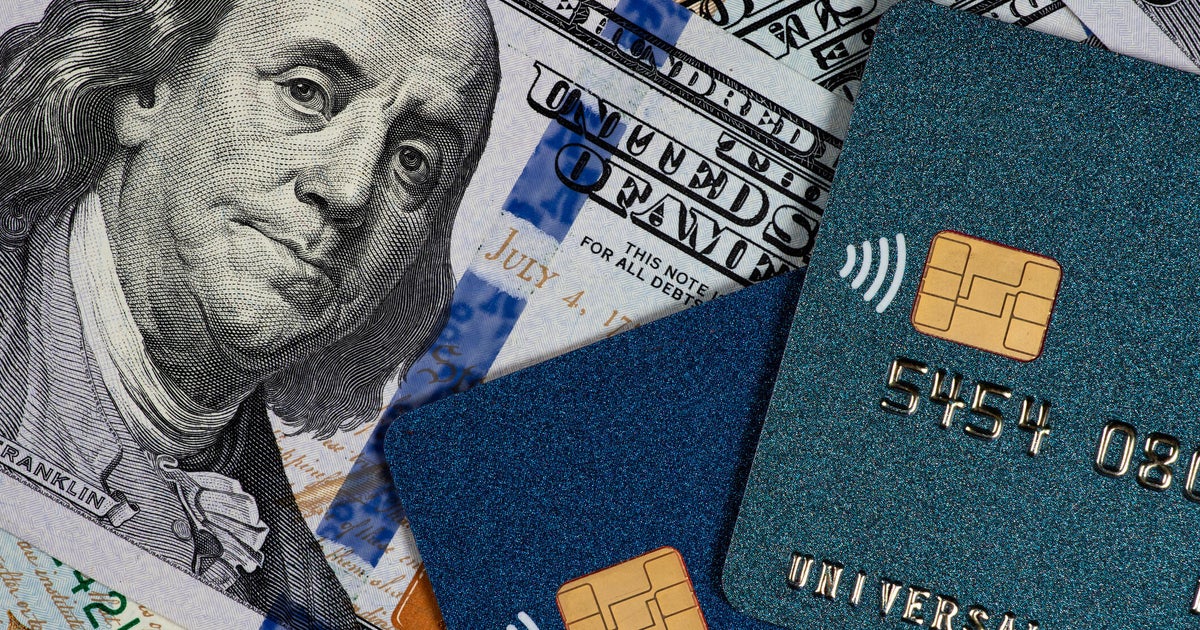 Be sure to keep an eye out for the warning signs that your credit card balance has crossed into dangerous territory.
Peter Blottman Photography/Getty Images
Be sure to keep an eye out for the warning signs that your credit card balance has crossed into dangerous territory.
Peter Blottman Photography/Getty Images
Credit cards tend to get a bad rep, but these short-term borrowing options can actually be useful financial tools, helping you cover expenses, earn rewards and build a strong credit profile. The key, though, is to use credit cards with a clear payoff plan in mind, as they also come with one of the highest borrowing costs in the consumer credit market.
For example, the average credit card rate is currently closing in on 22%, just under a record high. As a result, many cardholders who have been carrying credit card debt from one month to the next have seen their balances creep up over the past year, making it harder to keep up with payments and easier to fall into a cycle of revolving debt.
If you're juggling multiple credit card balances or watching your minimum payments eat into your monthly budget, you may be wondering at what point your credit card debt becomes excessive. The line isn't always clear, but there are ways to spot the signs, which is the first step toward knowing whether your own debt is manageable or something more troubling.
Learn more about the debt relief strategies available to you today.
What is considered excessive credit card debt?
If you're searching for a specific number that definitively marks the line between acceptable and excessive credit card debt, you won't find one. A $5,000 balance might be perfectly manageable for someone earning $120,000 annually, but it may represent a serious burden for someone making $35,000. Context matters enormously.
Rather than looking for a specific number, financial experts recommend evaluating your debt through several key metrics instead. First, consider your debt-to-income (DTI) ratio — specifically, how much of your monthly gross income goes toward debt payments. If you're spending more than 36% of your income on all debt obligations (including your mortgage, car loans and credit cards), that's generally considered high. For credit card debt alone, any DTI ratio above 10% of your monthly income should raise concerns.
Your credit utilization ratio is another crucial metric to consider. This measures how much of your available credit you're actually using. If your credit cards have a combined limit of $20,000 and you're carrying $15,000 in balances, you're at 75% utilization, which is far above the 30% threshold that credit experts recommend staying under. High credit utilization not only signals that you might be overextended, but it also actively damages your credit score.
Perhaps the most practical indicator, though, is whether you can pay more than the minimum required on the account each month. If you're consistently making only the minimum payments on your credit cards, that's a red flag. Credit card companies design minimum payments to keep you in debt as long as possible, as the majority of each payment goes toward interest charges, not the principal balance.
Finally, ask yourself an honest question: Is your debt causing you stress or preventing you from meeting other financial goals? If you're losing sleep over your high credit card balances or putting off important priorities because credit card payments consume too much of your income, that's excessive by definition, regardless of the actual number.
Find out how you can start tackling your high-rate credit card debt now.
How to tackle your excessive credit card debt
If your credit card debt feels unmanageable, there are proven strategies to bring it back under control. The right approach depends heavily on your balance size, income and credit profile, but here are some of the options you may want to consider:
- Debt snowball or avalanche methods: With the snowball method, you pay off the smallest balances first to build momentum. The avalanche method prioritizes paying off the highest-rate debts first, which can save you more money over time.
- Balance transfers: If you have good credit, a 0% APR balance transfer offer can give you significant breathing room. These promotions usually last 12 to 21 months, providing time to pay down balances without accumulating additional interest.
- Debt consolidation: Rolling multiple balances into a single installment loan with a lower interest rate can simplify repayment and potentially reduce your overall costs.
- Credit counseling and debt management: Credit counseling agencies can help negotiate lower interest rates and fees with creditors and help you consolidate payments through a debt management plan.
- Debt settlement: For those deeply overwhelmed by debt, pursuing settlements with your creditors in return for a lump-sum payment could reduce what you owe by 30% to 50% or more. However, this route often impacts your credit score and tax burden and should be approached with caution.
- Bankruptcy: If your debt is truly insurmountable, Chapter 7 or Chapter 13 bankruptcy may offer a reset. This comes with long-term consequences for your credit, but it can be a necessary step for some borrowers.
The bottom line
Excessive credit card debt isn't defined by a single number. It's determined by how much strain your debt puts on your finances. If your balances are climbing faster than you can pay them down, or if you're only able to make minimum payments, it may be time to act. Fortunately, there are multiple strategies available, from repayment methods to professional debt relief options. Recognizing the signs early and choosing a strategy that fits your circumstances can help you move from a cycle of debt to a path toward financial stability.
Angelica Leicht is the senior editor for the Managing Your Money section for CBSNews.com, where she writes and edits articles on a range of personal finance topics. Angelica previously held editing roles at The Simple Dollar, Interest, HousingWire and other financial publications.


















































